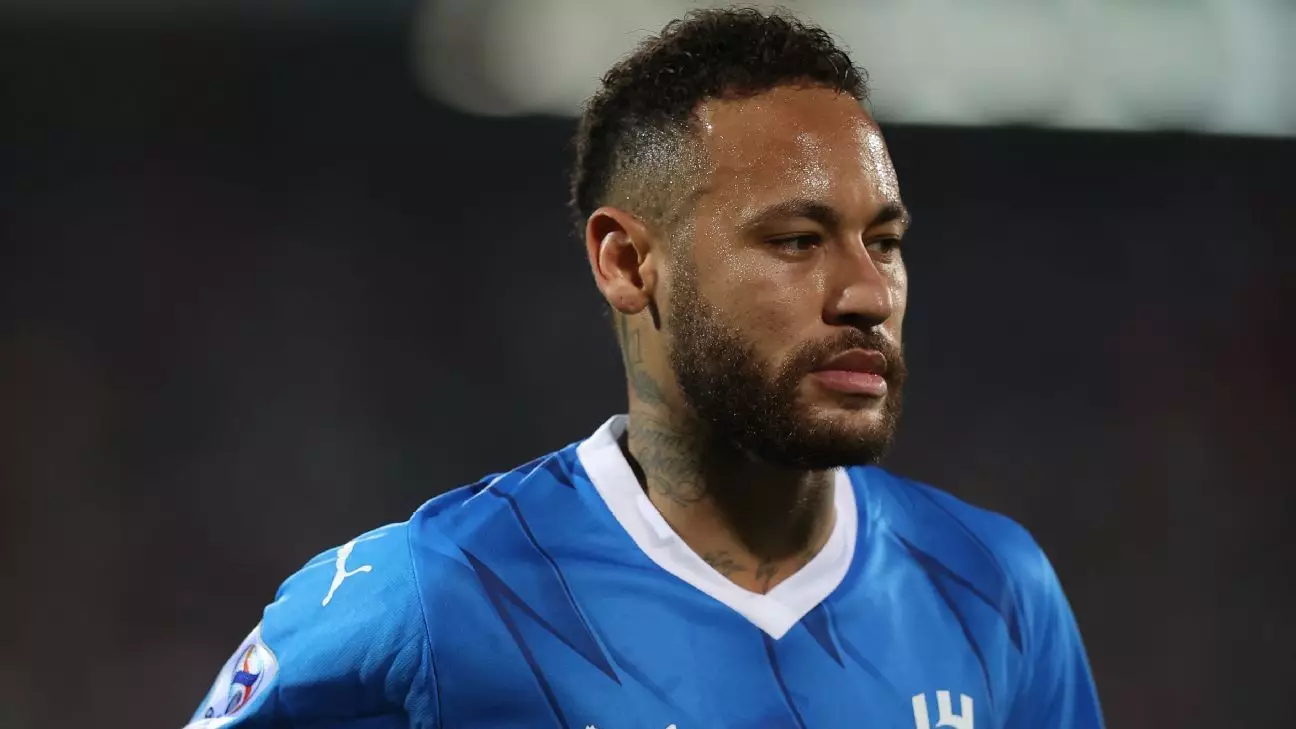As the dust settles after the closure of the transfer window across Europe’s top five leagues, the anticipation in the football community remains high. Despite the official status that clubs cannot make transfers, speculation continues to flourish. This article dives into the latest developments, assessing potential moves, contracts, and player standings, while examining how these situations may unfold in a continuously ticking clock of the football mega-industry.
One of the most intriguing narratives brewing in the football world is the potential return of Neymar to Barcelona. With reports emerging from Spanish outlet Sport, the 32-year-old forward, currently with Al Hilal, may be considered a primary backup if negotiations for Manchester City star Erling Haaland do not succeed. Barcelona sees Haaland as a pivotal acquisition for their ambitions in the 2025 summer transfer window, but with Neymar’s contract expiring soon, a return to Catalunya could be a strategic choice. Such a move would facilitate Neymar’s preparations for Brazil’s 2026 FIFA World Cup aspirations, allowing him to regain his rhythm in a familiar setting. The Brazilian’s recent year-long recovery from a severe knee injury adds another layer of complexity, with his fitness outcomes being crucial to any prospective negotiations.
Liverpool’s reported interest in Borussia Dortmund’s Karim Adeyemi underscores the growing trend of clubs investing in young talent. Following a remarkable performance that included a swift hat-trick against Celtic, Adeyemi has caught the eyes of top-tier English clubs. Although bound to Dortmund until 2027, Liverpool appears ready to make a substantial offer—rumored to be around €50 million—testing Dortmund’s resolve to retain one of their standout attackers. The question remains: will this be sufficient to persuade Dortmund to let go of a player seen as a key figure in their future squad?
The pursuit of Lille’s Jonathan David by Arsenal marks a critical point in the young forward’s career trajectory. The Gunners are not alone; Serie A’s Juventus and Internazionale are also keen on the Canadian talent. With David potentially hitting the free-agent market next summer, the stakes are rising for clubs eager to secure his services before he becomes available at a bargain price. The economic implications for clubs in this modern football landscape—especially amidst post-pandemic financial realities—are significant. A successful acquisition could enhance Arsenal’s attacking potential, promoting their ambitions for domestic and European competitions.
At Manchester United, the focus shifts towards the club’s youth strategy, with aspirations to extend Kobbie Mainoo’s contract until 2029. This plan signifies a commitment to nurturing home-grown talent capable of anchoring future successes. Mainoo, a promising midfielder at just 19 years old, represents the club’s vision to integrate youth with experience effectively. The additional year option in his contract serves as an assurance to supporters, emphasizing United’s strategic long-term vision, and their efforts to build a formidable squad from within.
The landscape for RB Leipzig’s Benjamin Sesko is also noteworthy, with both Manchester United and Arsenal reportedly taking a measured approach. After extending his contract, there is little urgency from interested suitors to push for immediate negotiations. This decision reflects a broader trend in the transfer market, where clubs are recalibrating their investment strategies, factoring in the stability of existing contracts and player development trajectories. With 24 goals in just 50 appearances, Sesko’s potential remains undeniable, suggesting that he will be a significant player to watch in future transfer windows.
Finally, Arsenal’s efforts to retain teenage sensation Ethan Nwaneri highlights the intense competition for young talent across the Premier League. Following his impressive performance in the Carabao Cup, Arsenal is determined to establish a long-term relationship with the 17-year-old, despite waiting for his 18th birthday to sign a new contract. This proactive approach underlines the club’s philosophy, aiming to cultivate local talent and secure players who can significantly contribute to their future successes.
The transfer window may have closed, but the dialogue surrounding player movements is only escalating. Various clubs are laying out their strategic plans focused on both immediate performances and future potential, reflecting the dynamic and ever-evolving nature of football management. As clubs navigate the complexities of contracts and player ambitions, fans can anticipate that the coming months will continue to be rife with speculation, engagement, and excitement. The football world has yet again affirmed that the transfer story never really ends—it simply transforms.

